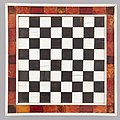Hardwood
wood from dicot trees; can be hard or soft (ranges from quite soft to extremely hard) From Wikipedia, the free encyclopedia
Remove ads
Remove ads
Hardwood is wood from dicotyledous trees and shrubs. That is, hardwood is wood from angiosperm trees and shrubs that are not monocots (palm trees are monocots).

The term "hardwood" is contrasted to "softwood"; softwood comes from conifer trees. Other than its name suggests, hardwoods are not always harder than softwoods. A hardwood may be harder than a softwood, equally hard, or softer. Balsa wood is an example of a very soft hardwood.[1] There are about a hundred as many species of trees and shrubs that yield hardwood than there are species of trees that yield softwood.[2] And these grow in a wider range of climates, influencing wood formation. So, it stands to reason that hardwoods are more varied than softwoods.
The heartwoods of many hardwoods are a shade of brown, but almost all other colors occur, especially in tropical hardwoods. There are hardwoods that are ivory-colored, yellow, green, red, purple and anything in between.


One of the hardest hardwoods is black ironwood which is recognized by the Guinness Book of World Records as the heaviest wood.[3] Quite a few hardwoods, such as ironwoods, are so dense that they sink in water rather than float as many other woods do.[4] In these woods, the cell walls are strongly lignified: lignin is a hard material used to support plants above the surface. The quantity of lignin is probably the main factor in their hardness.
Most hardwoods transport water by vessels, which are composed of cells that are connected by (relatively) large openings, making for a tube. Softwoods transport water by cells called tracheids, which do not make up such tubes.
Hardwoods can be used for many purposes, depending on their physical and chemical properties. Hardwoods are used to build ships, boats, buildings, furniture, floors, stairs. Some hardwoods are excellent for carving.
Remove ads
Various colors
- Light-colored
- Yellowish
- Greenish
- Greenish
- Reddish
- Red
- Purple
- Brown
- Dark brown
- Almost pure black
- Pure black and near white
- Striped
- Striped
- Striped
- Striped
- Figured
- Figured
- Figured
- Figured
Temperate hardwoods of the Northern Hemisphere
Common temperate trees found in the USA[5] and Europe, that supply hardwood.
| Alder | Ash | Aspen | Beech | Birch | Boxwood | Cherry |
| Cottonwood | Elm | Hackberry | Hickory | Hard maple | Horse chestnut | Oak |
| Sassafras | Maple | Olive tree | Poplar | Yellow poplar | Walnut | Willow |
Other areas of the world have other trees supplying hardwood. This is not a complete list of all hardwood trees.
Uses of hardwood

Hardwoods can be used for many purposes, depending on their physical and chemical properties. But many things once made of hardwood are now made of ceramics, plastic or softwood. In most cases high-quality hardwoods are supplied by trees that have had ample time to grow. When grown in plantations trees often do not get that time: plantations tend to be most profitable if trees can be harvested quickly. The destruction of tropical and temperate forests has made high-quality hardwood expensive and scarce.
For items that get used a lot, high-density hardwoods will be more resistant to wear and will last longer than softwoods. These items include furniture, flooring, and utensils. Knife handles can be made from a select few hardwoods, such as cocobolo and ebony. Furniture made from hardwoods tends to be more expensive than that made from softwoods.[2]
Hardwoods are also used to make wood veneers for decorative effects. These can be glued over other, cheaper woods, making them less expensive than solid hardwood while still giving them the appearance of a particular wood. This also reduces the risk of warping and splitting. This has become a common way of using tropical hardwoods that have a limited supply due to deforestation occurring in many tropical countries.[6]
In Europe, hardwoods account for some thirty percent and softwoods for some seventy percent of wood consumption.[7] Hardwood has very short fibers and is so also used to make fine paper such as writing paper, tissue, and printing paper.[7] Paper with longer fibers such as paper bags, cardboard and shipping containers is made of softwoods.
Gallery
A variety of objects made from different hardwoods.
- Chess pieces: boxwood and rosewood
- Chess pieces: cocobolo
- Chess pieces: red sandalwood
- Guitar, maple
- Guitar, koa
- Guitar part, walnut
- Longbows from ash
- White oak sword (sport)
- Baseball bats
- Bowling alley
- Hardwood flooring made from tigerwood
- A Djembe drum made of hardwood
- A boxwood carving from China
- Carving, sandalwood
- Carving
- Antique sidetable
- Antique furniture
- Windsor chair
- Chair, mahogany
- Pipe
Remove ads
Related pages
References
Other websites
Wikiwand - on
Seamless Wikipedia browsing. On steroids.
Remove ads








































